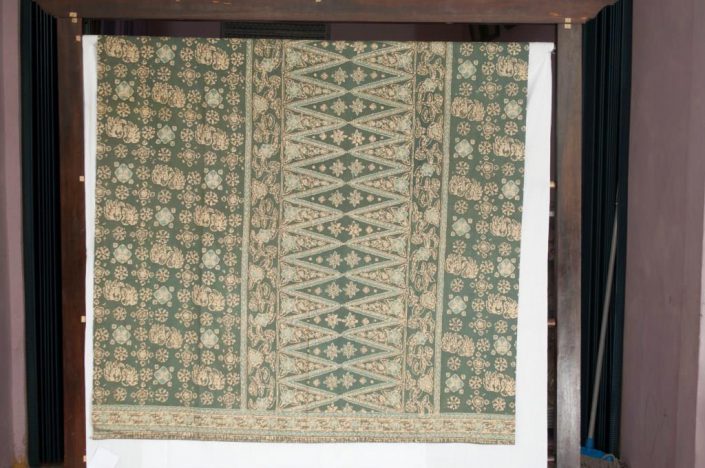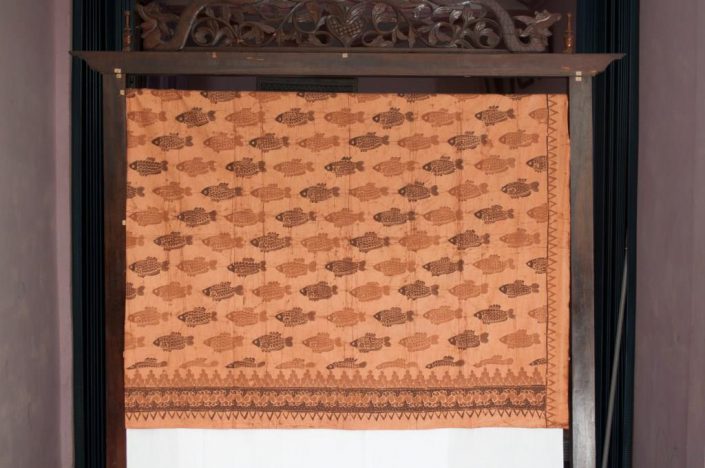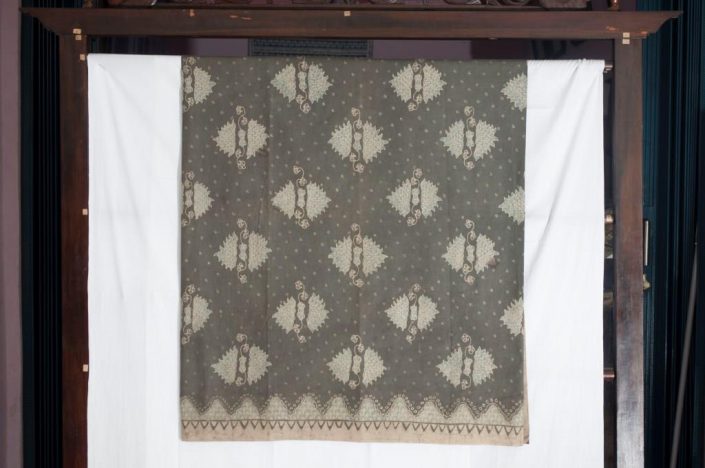Limited Edition Other
Natural Dyes of Jambi Batik
Long before chemical colorings for batik industry was introduced by the Dutch in 1937, all artisans in batik centers used natural colorings obtained from parts of plants, animal blood, or even mud, to achieve a beautiful color composition on a piece of batik. Some types of natural colorings had even became important trading commodities of VOC, which were mass cultivated in the East Indies.
On April 22, 1828, the government of the Dutch East-Indies requested farmers in Java island to plant bixa orellana andindigoferatinctoria along the main roads in Java. This evidence can be seen along the main roads between East Java, Yogyakarta-Pekalongan-Cirebon-Tasikmalaya-Jakarta.
The cultivation of indigofera plants in Indonesia is closely related to the politics of Cultivation System or Cultuur Stelsel, issued by General Johannes van den Bosch in 1830 to 1870. The application of this system required people to cultivate commodities in demand in the European markets, among others, sugarcane, rubber, tea, coffee, palm oil, and spices, grown on fertile lands, while the cultivation of indigofera and bixa (achiote) plants are grwon in unproductive or rainfed lands.
In Jambi, the evidences of the use of natural colorings can still be traced from the ancient Jambi batik collection owned by collectors. Batik with natural colorings made in Jambi, and the natural colorings used are unique of the area, is equally beautiful compared to batik with natural colors from other regions.
An ethnography curator, BM Goslings,found that red Jambi batik is very fine and smooth(Goslings, 1928: 279), yet the villagers across the Batanghari River admitted that they have no idea how the red dye was prepared, and this has been the main reason to doubt that the cloth had actually originated from Jambi. However, the preparation of red dye has often been a guarded secret in Indonesia and elsewhere, and it is likely that the villagers were reluctant to reveal their sources to each other, particularly to the Dutch (Maxwell 1981). Natural color using rattan fruit and sappan wood as red color in Jambi is carefully guarded by the family, even the women who knew the secret won’t tell their husbands or brothers.
Rattan fruit and sappan woods are red coloring ingredients which are not widely used in Java, until the iintroduction of noni tree’s root dye which is usually used to obatin red coloring. Although noni trees grow in many batik center villages in Jambi, they do not use the root to obtain dyes. Thus it is possible that the red color dyeing is a common habit done by Jambi craftswomen, before the introductions of the new techniques and ingredients from Java.
Natural dyeing is a coloring process using natural ingredients, generally come from the plants. In the plant’s tissues, there is a plant pigment that produces colors, depending on the type of its chemical structure. The class of plant’s pigments may be in the form of chlorophil, carotenoids, flavonoids, and quinones. Natural dyes in plants come from woods, wood barks, roots, root barks, seeds, husks, leaves, as well as flowers.
The colors produced from natural dyeing process tend to be soft and unique as well as exclusive in nature. This is due to the characteristics of the plants and the environmental factors that influence the plants.
The dyeing process using natural colorings is more complicated than that using synthetic colorings, but more environmentally friendly. One of the obstacles of textile dyeing using natural colorings is the limited availability of color variety, and the ingredients are unreadily available, that specific processes must be performed to prepare a textile dye solution.
The textile materials dyed with natural colors are made of natural fibers, for example silk, wool, and cotton. Materials made of synthetic fibers such as polyester,nylon, and others, do not have an affinity or appeal towards natural colorings, hence these materials are diffiult to dye with natural colorings. The silk fabric in general has great affinity to natural colorings compared to materials made of cotton. While the materials used to maintain the natural colorings from discolor are, among others, alum, limestone. Lotus, lemon lime, and bilimbi.
The following is a list of several samples of natural colorings usually used by batik artisans in Jambi:
| Type of Plants | Source of Colorings | Color tendencies |
| Artocarpusintegra (jackfruit) | Wood | Yellow |
| Bixaorellana (bixa, somba) | Husks | Orange |
| Caesalpiniasappanlinn (sappanwood) | Wood | Red |
| Cudraniajavanensis (Tegeran) | Wood | Yellow |
| Peltophorumpterocarpum (Yellow Poinciana / Jambal) | Bark | Brown |
| Ceriopscandolleana (Tingi) | Bark | Brown |
| Indigofera (True Indigo) | Leaves | Blue |
| Curcuma sp. (Turmeric) | Root | Yellowish Brown |
| Mangiferaincida (Mango) | Leaves | Green |
| Morindacitrifolia (Noni) | Root husks | Red |
| Nyctanthes arbor-tristis (Coral Jasmine/Srigading) | Flowers | Yellow |
| Terminaliabellirica (Beleric) | Fruit skin | Yellow |
| Xylocarpusgranatum (Cedar Mangrove) | Wood | Brown |
| Calamus (Sweet Flag) | Fruit | Red |




